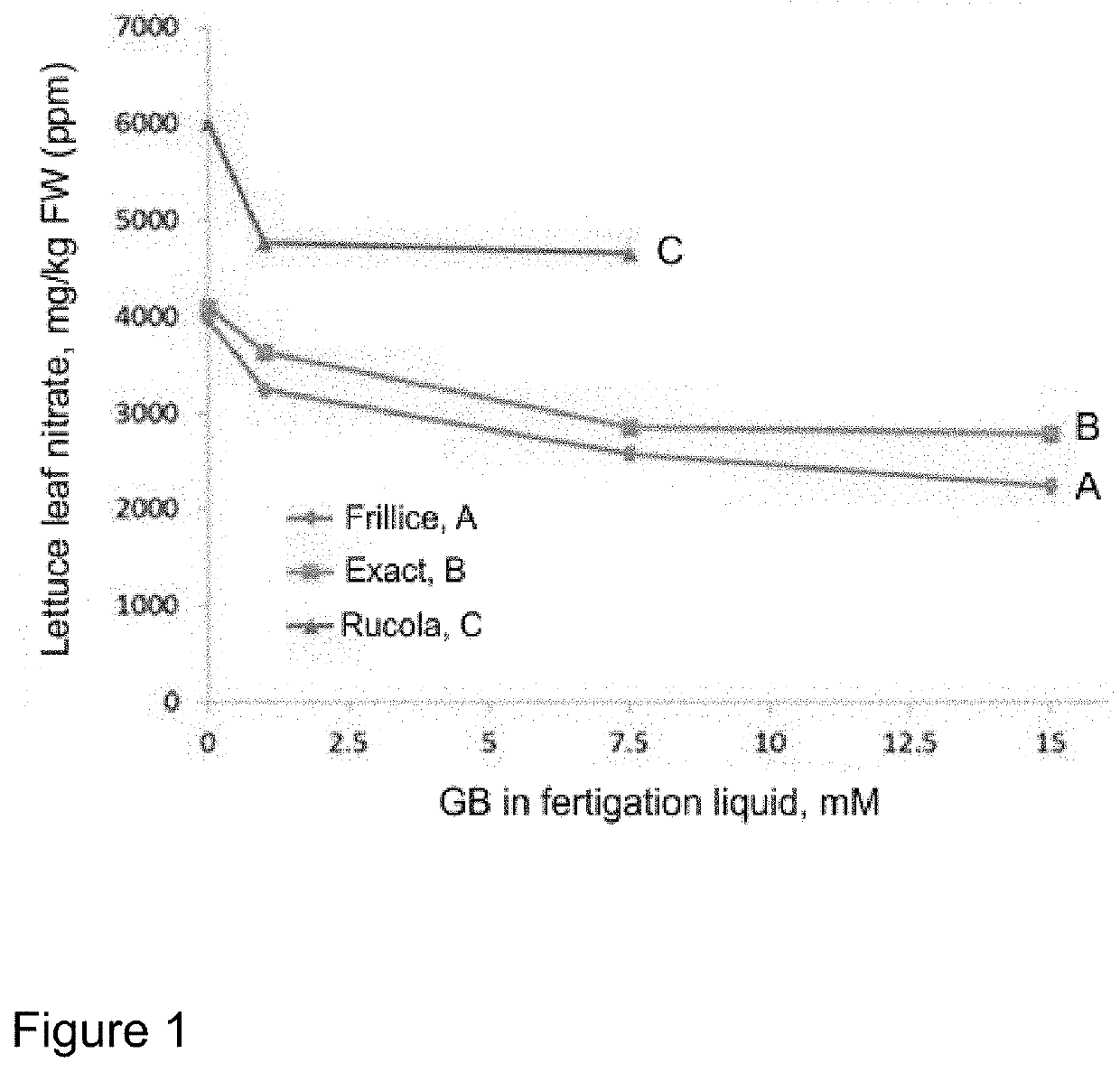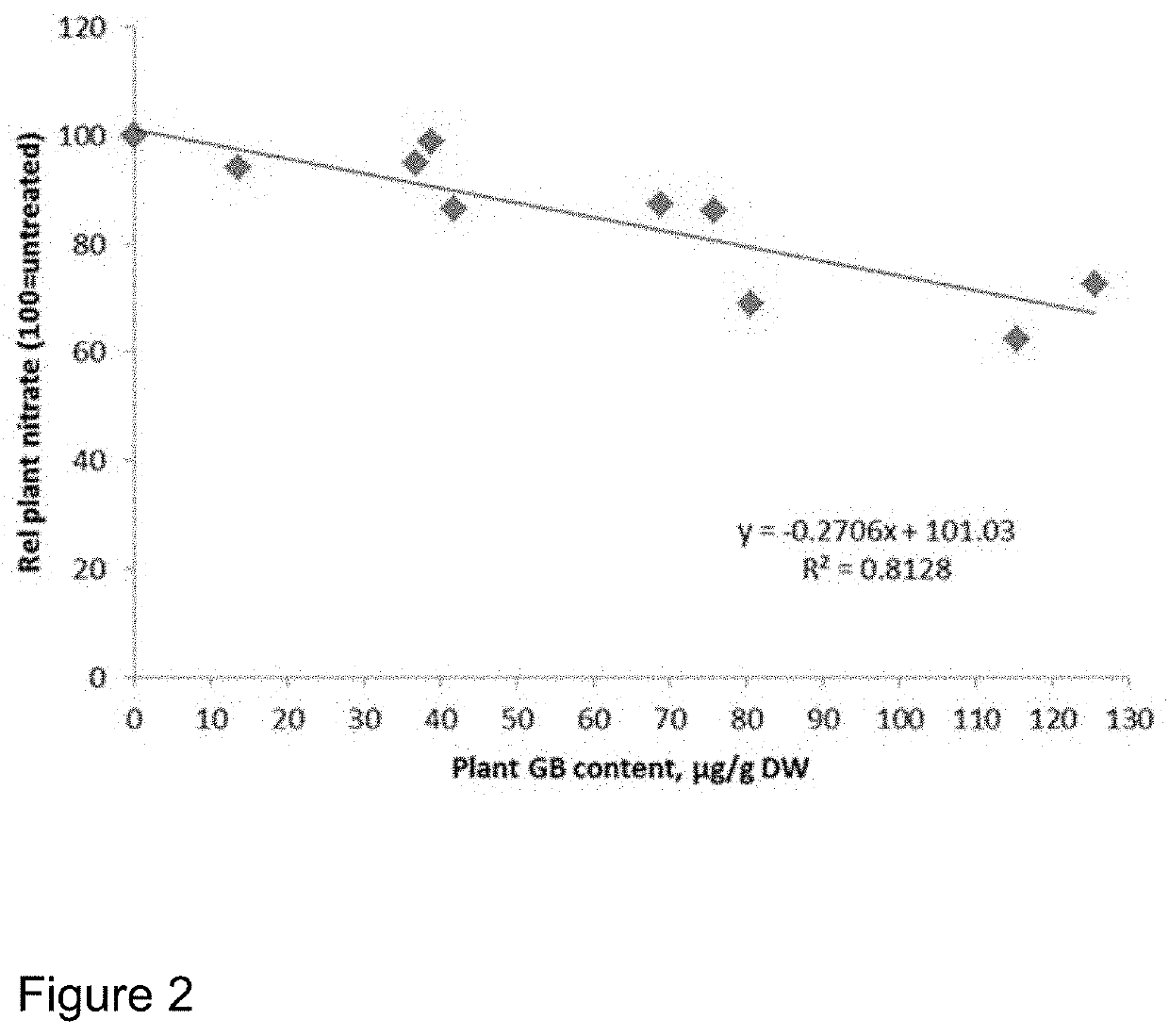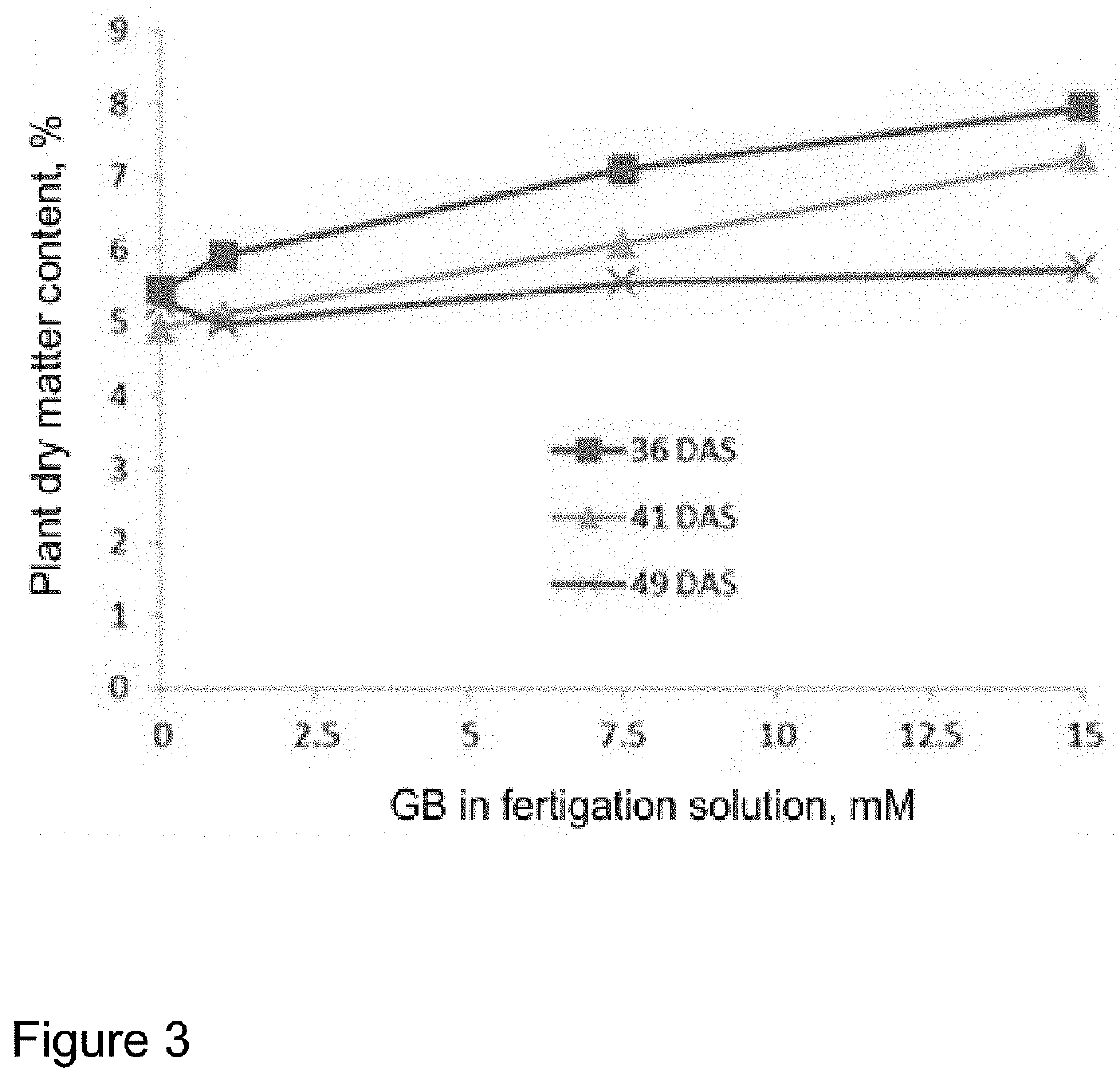Reduction of nitrate content in plants
a technology of nitrate and plant, applied in the field of reducing nitrate content in plants, can solve the problems of increasing nitrate intake and associated health hazards, imposing significant losses on both farmers and food distributor chains, and no alternative method has been offered, so as to achieve maximum yield, enhance quality of leafy vegetable plants, and add sustainability and cost-effectiveness
Active Publication Date: 2021-07-06
LUONNONVARAKESKUS
View PDF20 Cites 0 Cited by
- Summary
- Abstract
- Description
- Claims
- Application Information
AI Technical Summary
Benefits of technology
The invention is a way to make leafy vegetables, like salad greens, with less nitrate content. This is important because nitrate can be harmful to human health, and the invention allows for safe and cost-effective commercial cultivation methods. The reduction of nitrate can also have beneficial effects on the quality of the vegetables, such as making them last longer and look better. The invention does not require eliminating nitrate fertilizers and can be used in both industrial hydroponics and greenhouse cultivation methods.
Problems solved by technology
One of the major drawbacks associated with hydroponic cultivation methods is that nitrogen (N), an element indispensable for plant growth, is delivered to plants in the form of water-soluble nitrates (NO3), the latter being traditionally used as fertilizers.
Whether this quality standard is not met, a foodstuff distributor has no option than to return vegetable products back to a farmer, which imposes significant losses on both the farmers and foodstuff distributor chains.
The situation aggravates with a fact that, at present, no alternative method has been offered suitable for industrial cultivation of leafy vegetable crops throughout the year and capable of stably producing high-yield crops along with providing reliable control means over the nitrate content in green foliage.
Another fundamental problem pertains to a fact that, although industrially cultivated leafy vegetable greens, such as leafy salads, contain plenty of compounds essential for promoting human well-being, consumption of said leafy vegetables on daily basis may, in some instances, result in increased nitrate intake and associated health hazards.
Thus, excessive nitrate accumulated in plant tissue undergoes enzymatic reduction to nitrite, which can be further converted into nitric oxide (NO), wherein the latter, in presence of oxygen, could be rapidly catalyzed into a peroxynitrite (ONOO—), which is highly toxic to plants.
High nitrate accumulation in plants is harmful to human health, as well as to plant growth.
Furthermore, one of the major problems associated with utilization of inorganic salts as osmolytes is that, although multiple biochemical processes in the cell require presence of specific inorganic ions, increasing concentrations of said ions above a certain threshold perturbs cell metabolism and, in particular, cell protein function, leading to at least partial protein denaturation and, as a consequence, to decrease in quality of cultivated vegetable products.
However, increased light exposure causes, although indirectly, leaf wilting, also referred to as a leaf burn, in leafy vegetables, wherein strong illumination leads to overheating and drying of the leaf surface.
As a consequence, leafy vegetable plants develop brown leaf edges, referred to as leaf burns, which are irreversible and greatly affect salability of leafy salad crops.
Additionally, since calcium plays a key role in regulating the osmotic balance in plant cells, reduced calcium transport through vascular tissue naturally results in nitrate accumulation in green foliage.
Method used
the structure of the environmentally friendly knitted fabric provided by the present invention; figure 2 Flow chart of the yarn wrapping machine for environmentally friendly knitted fabrics and storage devices; image 3 Is the parameter map of the yarn covering machine
View moreImage
Smart Image Click on the blue labels to locate them in the text.
Smart ImageViewing Examples
Examples
Experimental program
Comparison scheme
Effect test
experiment 1
[0100] Control (GB 0);
experiment 2
[0101] GB 1 mM (applied DAS 32);
experiment 3
[0102] Split application, as follows: GB 1 mM (applied DAS 29)+GB 1 mM (applied DAS 32)+GB 1 mM (applied DAS 37); and
the structure of the environmentally friendly knitted fabric provided by the present invention; figure 2 Flow chart of the yarn wrapping machine for environmentally friendly knitted fabrics and storage devices; image 3 Is the parameter map of the yarn covering machine
Login to View More PUM
| Property | Measurement | Unit |
|---|---|---|
| concentration | aaaaa | aaaaa |
| weight | aaaaa | aaaaa |
| temperature | aaaaa | aaaaa |
Login to View More
Abstract
A method for reducing nitrate content in leafy vegetable plants, in particular, in salad crops, is provided. In the method, at least one organic osmolyte compound is delivered, in a predetermined amount, to the plant, preferably, a hydroponically cultivated plant. The method advantageously utilizes betaine compounds. Related preparation and uses are further provided.
Description
FIELD OF THE INVENTION[0001]The present invention generally relates to improving quality of commercially feasible leafy vegetable plants. In particular, the invention concerns reducing nitrate content in leafy salad crops hydroponically cultivated in greenhouses or plant factories.BACKGROUND[0002]Leafy vegetables, in particular, leafy salad greens cultivated throughout the year constitute, at a time being, one of the most economically significant vegetable crops in view of pronounced health benefits imparted by consumption of said leafy salads on a daily basis. Leafy vegetables are important contributors of vitamins, such as vitamins A, C and E;[0003]minerals, such as calcium and potassium; and anti-oxidants that include the abovementioned vitamins and flavonoid phytochemicals, such as anthocyanins.[0004]Lettuce (Lactuca spp.) salad species, its varieties and cultivars, such as iceberg lettuce, for example, constitutes one of the major leafy vegetable plants cultivated all the year ...
Claims
the structure of the environmentally friendly knitted fabric provided by the present invention; figure 2 Flow chart of the yarn wrapping machine for environmentally friendly knitted fabrics and storage devices; image 3 Is the parameter map of the yarn covering machine
Login to View More Application Information
Patent Timeline
 Login to View More
Login to View More Patent Type & Authority Patents(United States)
IPC IPC(8): A01G22/15C05F11/10A01G9/24A01C21/00
CPCA01G22/15A01C21/00A01G9/247C05F11/10A01G31/00A01P21/00A01N37/44A01N43/16A01N31/02A01G24/20A01G24/30A01N3/00C05G3/80C05G3/90C05F11/00
Inventor JOKINEN, KARIMÄKELÄ, PIRJO
Owner LUONNONVARAKESKUS
Features
- R&D
- Intellectual Property
- Life Sciences
- Materials
- Tech Scout
Why Patsnap Eureka
- Unparalleled Data Quality
- Higher Quality Content
- 60% Fewer Hallucinations
Social media
Patsnap Eureka Blog
Learn More Browse by: Latest US Patents, China's latest patents, Technical Efficacy Thesaurus, Application Domain, Technology Topic, Popular Technical Reports.
© 2025 PatSnap. All rights reserved.Legal|Privacy policy|Modern Slavery Act Transparency Statement|Sitemap|About US| Contact US: help@patsnap.com



